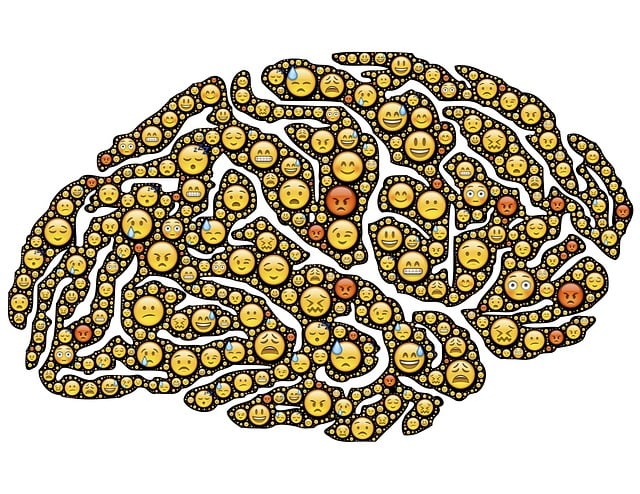Littleton Chronic Pain Therapy emphasizes the power of positive thinking to manage chronic pain, promoting optimism and resilience through mindset reframing. By encouraging patients to challenge negative thoughts with affirmations and employing techniques like Mental Wellness Journaling, therapists lessen the psychological burden associated with chronic pain. Cultural sensitivity is crucial for tailoring strategies that respect diverse patient backgrounds, improving quality of life. Simple practices like gratitude journaling and mindful meditation significantly enhance well-being, while a step-by-step guide educates healthcare professionals on integrating positive thinking techniques into treatment.
Positive thinking exercises have emerged as a powerful tool in managing chronic pain, particularly within the context of Littleton Chronic Pain Therapy. This article explores the profound impact of positive thinking on mitigating persistent pain, offering practical strategies for its incorporation into daily routines. We provide a comprehensive step-by-step guide tailored specifically for individuals navigating Littleton Chronic Pain Therapy, aiming to empower them with effective techniques to enhance their overall well-being.
- Understanding Positive Thinking and its Impact on Chronic Pain
- Strategies for Incorporating Positive Thinking Exercises
- Implementing Positive Thinking in Littleton Chronic Pain Therapy: A Step-by-Step Guide
Understanding Positive Thinking and its Impact on Chronic Pain

Positive thinking, a powerful tool in managing chronic pain, has gained significant attention in the field of healthcare, especially in Littleton Chronic Pain Therapy. This approach focuses on reframing one’s mindset to cultivate optimism and resilience, which can significantly impact an individual’s ability to cope with long-term pain. By encouraging patients to challenge negative thoughts and replace them with positive affirmations, therapists aim to reduce the psychological burden often associated with chronic pain conditions.
The implementation of positive thinking exercises, such as Mental Wellness Journaling, can be a game-changer in Burnout Prevention Strategies for Healthcare Providers, particularly those treating complex pain cases. Cultural Sensitivity in Mental Healthcare Practice is also essential, ensuring that these strategies are tailored to meet the unique needs and beliefs of diverse patient populations. Through regular practice, patients learn to manage their pain more effectively, improving their overall quality of life and well-being.
Strategies for Incorporating Positive Thinking Exercises

Incorporating positive thinking exercises into daily routines can be a powerful tool for managing chronic pain, as offered by Littleton Chronic Pain Therapy. Start with small, manageable steps to cultivate a more optimistic mindset. Simple practices like keeping a gratitude journal or practicing mindful meditation for just 10 minutes a day can significantly impact overall well-being. These strategies not only help in Stress Reduction Methods but also foster Resilience Building, enabling individuals to cope better with pain and daily challenges.
Cultural Sensitivity in Mental Healthcare Practice plays a crucial role here. It’s important that exercises are tailored to respect individual cultural backgrounds, ensuring their relevance and effectiveness. Incorporating positive thinking into your life doesn’t have to be complex; it can begin with simple affirmations or sharing positive moments from the day with supportive friends and family. These small actions collectively contribute to a more balanced and fulfilling life despite chronic pain.
Implementing Positive Thinking in Littleton Chronic Pain Therapy: A Step-by-Step Guide

Implementing Positive Thinking in Littleton Chronic Pain Therapy can significantly enhance treatment outcomes and improve patients’ overall well-being. Here’s a step-by-step guide to help healthcare professionals integrate this powerful tool into their practice. Firstly, educate patients about Mind Over Matter Principles; explain how positive thoughts can influence pain perception and emotional state. This knowledge empowers them to embrace a proactive mindset.
Next, encourage the practice of daily affirmations focusing on self-esteem improvement. Simple statements like “I am capable of managing my pain” or “I deserve comfort and peace” can reinforce resilience. Incorporate cognitive reframing techniques during therapy sessions. Help patients identify negative thoughts and replace them with realistic, positive alternatives, reducing the impact of chronic pain on their daily lives.
Positive thinking exercises have proven to be a powerful tool in managing and reducing chronic pain, especially within the context of Littleton Chronic Pain Therapy. By implementing these strategies, individuals can actively participate in their healing process, fostering a mindset that promotes resilience and overall well-being. This step-by-step guide offers a practical approach to integrating positive thinking into therapeutic routines, ultimately enhancing the effectiveness of treatments and improving the quality of life for those navigating chronic pain.














